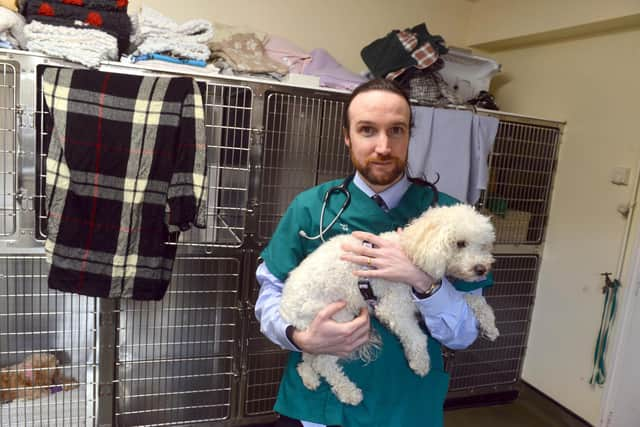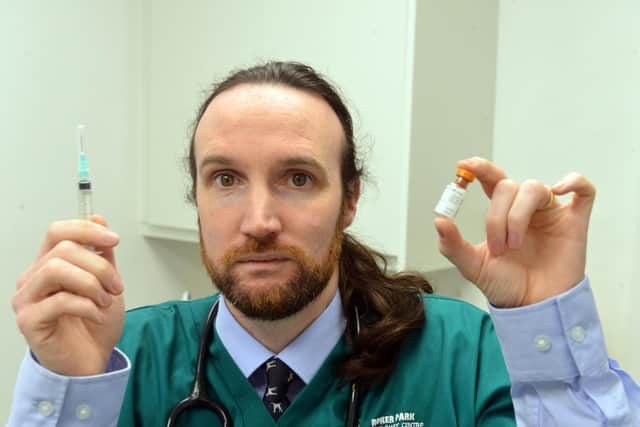Watch as Sunderland vet explains everything you need to know about parvovirus and how you can keep your dog safe
and live on Freeview channel 276
In 12-and-a-half years as a vet, Rory had never seen a case of parvovirus, but in the last two months he has seen five cases at his Roker Park Veterinary Centre.
Last week, Ashbrooke resident Graeme Clark also contacted the Echo after his Labrador Spaniel cross, Freddie contracted the virus and “was an hour from death”.
Advertisement
Hide AdAdvertisement
Hide AdRory, 36, said: “Since November, I‘ve seen cases from dogs in Fulwell, Monkwearmouth, Grangetown, Pennywell and Town End Farm and I’m also aware of other practices seeing large numbers.
"The rise is obviously worrying.”
What is parvovirus and what symptoms should owners look out for?
Parvovirus infects cells of the intestines and white blood cells.


Rory said: “The most common signs are very bloody diarrhoea a lot of lethargy in which the dogs want to lie around, don’t want to eat and in this outbreak I’m seeing a lot more dogs vomiting.”
Advertisement
Hide AdAdvertisement
Hide AdHow deadly is parvovirus and what should owners do if their dogs display symptoms?
Diarrhoea, lethergy and vomiting can be symptoms “of a whole host of canine illnesses”, however with cases on the rise, Rory has urged owners to air on the side of caution.
He said: “If a dog has vomiting and diarrhoea and isn’t responding after a couple of days then you need to seek veterinary attention. If the diarrhoea is particularly nasty and the dog is very lethargic then seek advice straight away as dogs can go down hill very rapidly.


"The mortality rate for dogs with parvovirus which receive early treatment is around 10 per cent but “is much higher with untreated dogs."
Why is parvovirus potentially on the rise?
Advertisement
Hide AdAdvertisement
Hide AdWhile Rory said there could have been mutations which have led to a new strain which can be more easily transmitted, he cited the impact of Covid lockdowns on the number of dogs being vaccinated as a potential reason.
He said: “Following the pandemic there has been a lot of people who’ve missed their pet’s vaccinations, including for parvovirus. Even when we were allowed to deal with patients again, the owners weren’t allowed into the surgery and many people were reluctant to leave their dogs for vaccination.
"There’s now a larger population of dogs who are not up-to-date with their vaccinations and so are susceptible to this virus.”
What can I do to protect my dog and other dogs?
Parvovirus is spread by faeces and so it’s vital to clean-up your pet’s poo, although Rory highlighted, “this is much more difficult if a dog has diarrhoea”.
Advertisement
Hide AdAdvertisement
Hide AdThe virus can remain on a contaminated surface “for up to 12 months” meaning the best form of protection is to ensure your dog is vaccinated.
Rory said: “Vaccination is the one thing that will protect against the virus. Puppies are normally vaccinated at eight and ten weeks, but in the face of an outbreak it’s worth getting another booster at 16 weeks.”
A dog which has had parvovirus can also be infectious for up to 14 days from displaying symptoms and so should be isolated from other dogs during this period.
